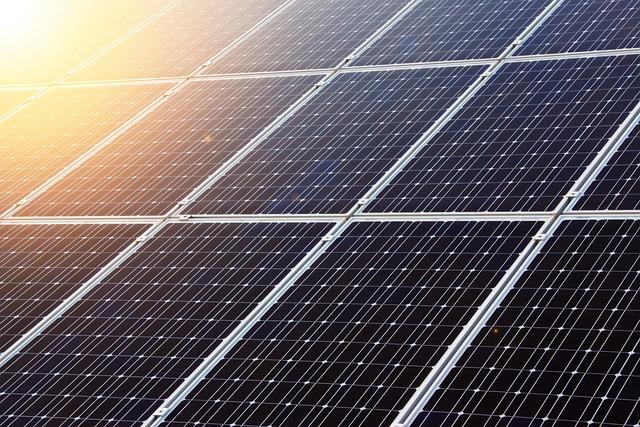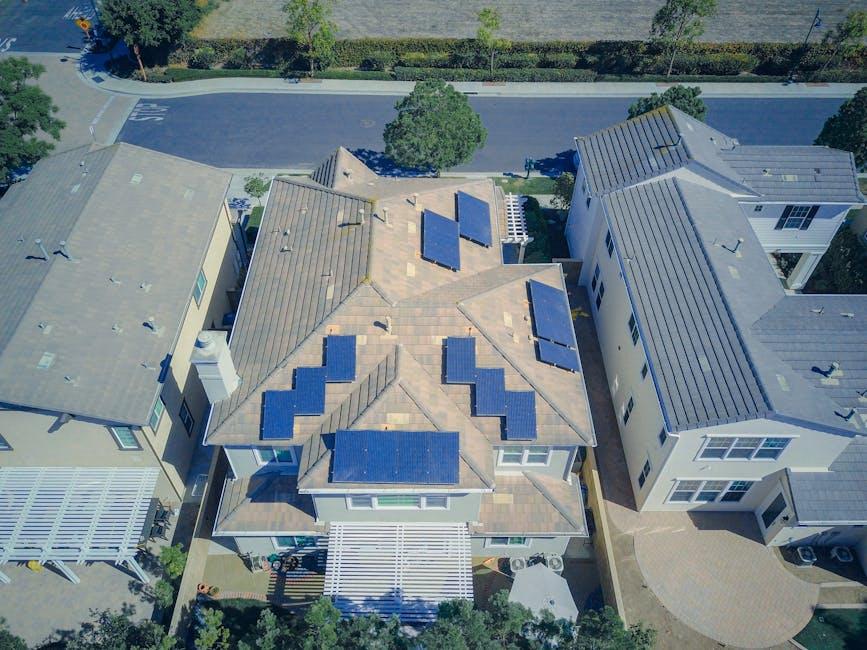In a world where the sun graces us with its radiant energy every day, the quest to harness its power more effectively has never been more crucial. As we stand on the brink of a new era in renewable energy, the spotlight is on solar panels, those gleaming sentinels of sustainability, as they undergo a remarkable transformation. The latest innovations in solar panel efficiency are not just about capturing more sunlight; they are about reshaping our relationship with energy itself. From cutting-edge materials to groundbreaking technologies, these advancements promise to propel us into a future where solar power becomes a cornerstone of global energy solutions. Join us as we explore the frontier of solar technology, where science meets creativity, and efficiency reaches new heights.
Harnessing the Sun: Breakthrough Technologies in Photovoltaic Cells
In recent years, solar technology has taken a quantum leap forward, thanks to groundbreaking advancements in photovoltaic cells. These innovations are paving the way for more efficient energy conversion, making solar power a more viable option for both residential and commercial use. At the forefront of these advancements are perovskite solar cells, which have demonstrated remarkable efficiency rates. Researchers are now focusing on hybrid systems that blend perovskite with traditional silicon, resulting in tandem cells that can capture a broader spectrum of sunlight.
- Bifacial solar panels: These panels can capture sunlight from both sides, increasing overall energy production by up to 20% compared to traditional single-sided panels.
- Quantum dot technology: By incorporating quantum dots, researchers are able to tune the light absorption properties of solar cells, potentially leading to higher efficiency rates.
- Floating solar farms: As land becomes scarcer, solar farms on bodies of water are gaining traction, offering cooling benefits that enhance the efficiency of photovoltaic cells.
These advancements not only promise to enhance the efficiency of solar panels but also make solar energy a more accessible and cost-effective solution for the future. As these technologies continue to develop, they will play a crucial role in our transition towards a more sustainable energy landscape.
Revolutionary Materials: Enhancing Solar Panel Performance
In recent years, the world of solar energy has witnessed groundbreaking advancements, with innovative materials playing a pivotal role in enhancing the performance of solar panels. Perovskite solar cells have emerged as a game-changer, offering high efficiency at a lower production cost. These cells can be manufactured using simple solution-based processes, making them a cost-effective alternative to traditional silicon-based panels. Their ability to be applied on flexible substrates also opens up possibilities for new applications, from wearable technology to building-integrated photovoltaics.
- Graphene: Known for its exceptional conductivity and strength, graphene is being integrated into solar panels to improve their efficiency and durability.
- Quantum Dots: These nanoscale semiconductors are being utilized to enhance light absorption and conversion efficiency, offering potential for significant performance improvements.
- Organic Photovoltaics: Utilizing organic molecules, these panels are lightweight and flexible, providing a versatile solution for various environments.

Optimizing Design: The Role of Nanotechnology in Solar Efficiency
Nanotechnology is revolutionizing solar energy by enhancing the efficiency of solar panels in unprecedented ways. By manipulating materials at the molecular or atomic level, scientists are able to create surfaces that are more adept at capturing sunlight and converting it into energy. This cutting-edge technology introduces the possibility of quantum dots—nanocrystals that can be tuned to absorb different wavelengths of light, thereby increasing the spectrum of solar radiation that can be harnessed. Additionally, the use of nanowires in solar cells can significantly reduce energy loss, providing a more direct pathway for electricity flow.
- Improved Light Absorption: Nanostructures can capture light more efficiently, minimizing reflection and maximizing energy intake.
- Increased Surface Area: The use of nanomaterials allows for a larger surface area at a microscopic level, enhancing the panel’s ability to collect sunlight.
- Durability and Flexibility: Incorporating nanotechnology can lead to more robust and flexible solar panels, suitable for diverse applications and environments.
These advancements not only boost the efficiency of existing solar technologies but also pave the way for the development of entirely new solar solutions. As research continues, the integration of nanotechnology into solar energy systems promises to make renewable energy more accessible and efficient, offering a sustainable path forward in the global energy landscape.

Strategic Deployment: Maximizing Output with Smart Solar Solutions
In the realm of solar technology, strategic deployment is pivotal to harnessing the full potential of solar panel innovations. The key lies in aligning smart solutions with the unique needs of each environment. By integrating cutting-edge technologies, such as bifacial panels and perovskite cells, solar systems can be tailored to maximize energy capture and conversion. These advancements not only enhance efficiency but also adapt to diverse conditions, from urban rooftops to expansive rural landscapes.
- Bifacial Panels: Capture sunlight from both sides, increasing energy output without additional space.
- Perovskite Cells: Offer a flexible and cost-effective alternative, with high efficiency and the potential for seamless integration.
- AI-Powered Tracking Systems: Optimize panel orientation in real-time, ensuring maximum exposure to sunlight.
These innovations, when deployed strategically, can transform solar installations into robust powerhouses. By leveraging data analytics and predictive modeling, solar solutions can be fine-tuned to predict energy yields and adjust configurations dynamically. This approach not only maximizes output but also ensures a sustainable and cost-effective energy future.
The Way Forward
As we stand on the brink of a new era in solar technology, the latest innovations in solar panel efficiency illuminate a path toward a more sustainable future. Each breakthrough not only enhances the potential of harnessing the sun’s abundant energy but also redefines our relationship with the environment. As researchers continue to push the boundaries of what is possible, we are reminded of the power of human ingenuity in addressing the pressing challenges of our time. The horizon is bright with promise, and as these advancements continue to unfold, they hold the potential to transform our world, one sunbeam at a time. Let us look forward to a future where the synergy between technology and nature paves the way for cleaner, more efficient energy solutions for generations to come.

































